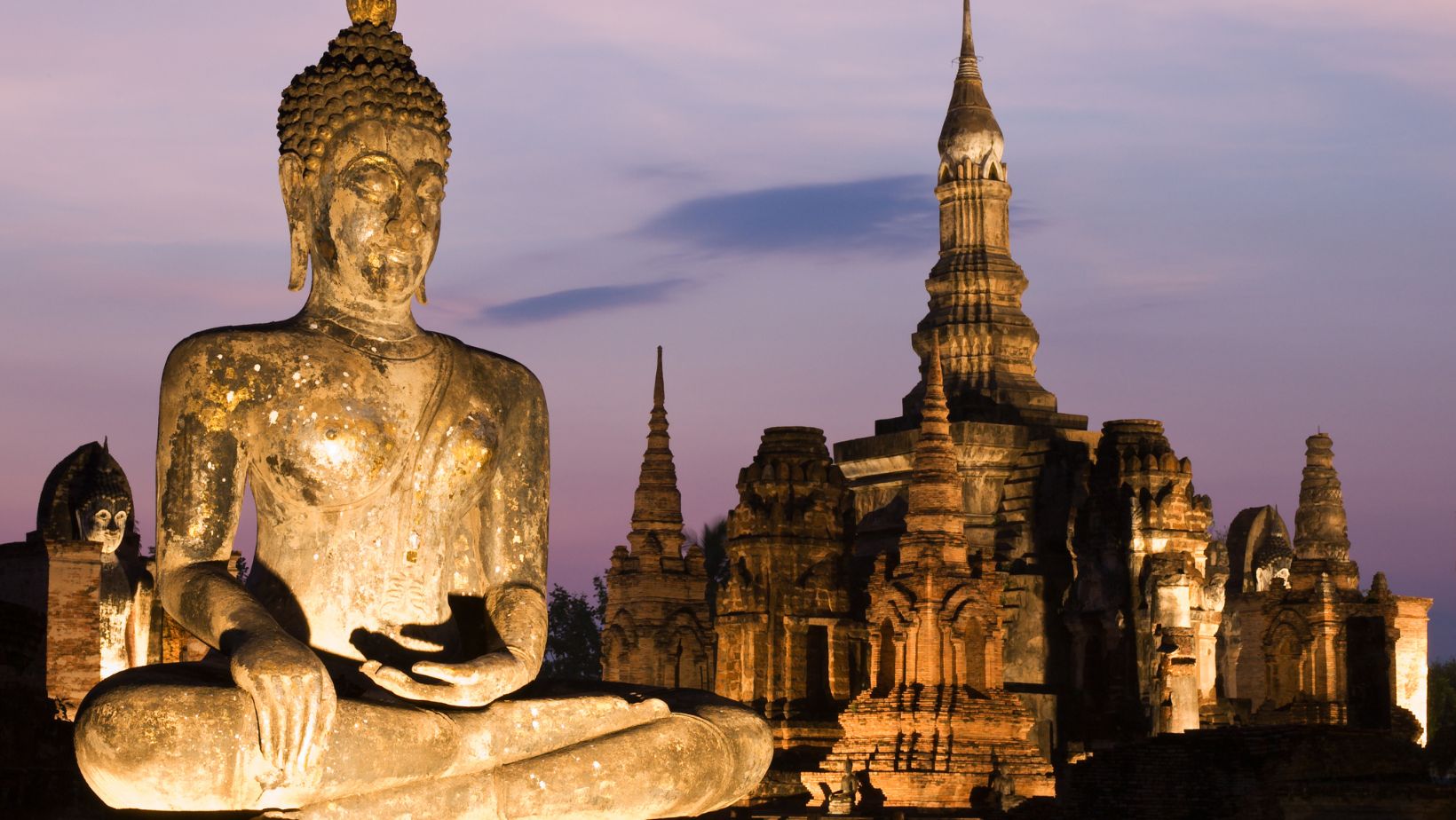Did you know that Thailand is home to several UNESCO World Heritage Sites? These sites are recognized globally for their cultural significance and natural beauty, making them must-see destinations for travelers who want to dive deeper into Thailand’s history and landscapes.
Here’s your guide to exploring all the 6 UNESCO World Heritage Sites in Thailand—from ancient kingdoms to untouched forests.
Cultural Heritage Sites
1. Historic City of Ayutthaya
Why it’s special:
Ayutthaya was the capital of Siam from 1350 to 1767 and a hub of political power, culture, and trade. The ruins—temple towers, monasteries, and prangs—provide a vivid picture of how the city looked during its golden years.
What to see:
-
Wat Mahathat, where a Buddha head is intertwined with tree roots
-
Wat Phra Si Sanphet, once part of the king’s royal palace complex
-
Riverside ruins and crumbling chedis that glow in soft morning light
When to go: November through February offers cooler, drier weather.
Tips:
-
Rent a bicycle or arrange a tuk-tuk ride to cover more ground.
-
Go early to avoid crowds and heat.
2. Historic Town of Sukhothai and Associated Towns
Why it’s special:
Regarded as the cradle of Thai culture, Sukhothai was the first Thai kingdom (13th–14th centuries). The architectural style developed here shaped everything that followed, including the depiction of the Buddha image and the layout of temple compounds.
What to see:
-
Wat Si Chum with its massive seated Buddha
-
Lotus ponds in the historical park
-
Adjacent towns like Si Satchanalai and Kamphaeng Phet, which together enrich the understanding of early Thai civilization
Best time: November during the Loy Krathong festival, when lanterns light up the park, is particularly magical.
3. Ban Chiang Archaeological Site
Why it’s special:
Located in northeastern Thailand, Ban Chiang is one of the most important prehistoric settlements in Southeast Asia. The site shows evidence of early farming and advanced metallurgy going back more than 3,500 years.
What to see:
-
Pottery with red spiral designs and other decorative styles
-
Bronze tools, ornaments, and burial sites
-
The Ban Chiang National Museum, where many finds are displayed
Best time: Throughout the year. For a quieter visit combine with trips to local markets or natural sights nearby.
Natural Heritage Sites
4. Thungyai–Huai Kha Khaeng Wildlife Sanctuaries
Why it’s special:
This massive, largely untouched forest along Thailand’s western border with Myanmar protects rainforests, dry forests, montane areas, and river systems. It supports nearly 77% of large mammals in the region, including tigers and elephants.
What to see/do:
-
River valleys, waterfalls, and remote hiking trails
-
Wildlife spotting with experienced guides
-
Views from ridges over forest canopies and streams
Best time: November to April, when the weather is drier and access is easier. Be aware many paths are remote; a guide is essential.
5. Dong Phayayen–Khao Yai Forest Complex
Why it’s special:
This forest complex spans multiple protected areas and is among the most biodiverse in Southeast Asia. It’s easier to reach than some remote sanctuaries, yet still offers genuine wilderness.
What to see/do:
-
Waterfalls, view-points, and jungle treks
-
Night safaris for nocturnal wildlife
-
Birdwatching, especially early morning or late afternoon
Best time: Late in the dry season (November–February) to avoid muddy trails and heavy rains.
6. Kaeng Krachan Forest Complex
Why it’s special:
Thailand’s newest addition to the UNESCO list (2021), this complex is important for both flora and fauna. It sits in the Tenasserim Range and connects several provinces. It’s a crossroad for species from the Himalayas, Indochina, and Sundaland.
What to see/do:
-
Dense forests with a variety of types: humid evergreen, dry evergreen, montane, deciduous dipterocarp etc.
-
Chance encounters with threatened species like the Siamese crocodile, clouded leopard, or elephants.
-
Birdwatching and hiking viewpoints that offer sweeping views across forest ridges
Best time: December through March for clearer skies and manageable temperatures.
Practical Tips for Visiting
-
Permits and access – Some parks and sanctuaries require advance permits or guided tours, especially for remote or restricted zones.
-
Local guides matter – Hiring local rangers or naturalists adds not just safety but insight—on where to spot wildlife, how to read the terrain, and how to travel responsibly.
-
Plan logistics – For remote natural sites, prepare for long travel times, basic lodging, and fewer conveniences. Bring essentials.
-
Respect environment and culture – Stay on trails, observe wildlife quietly, avoid litter. In cultural sites, dress modestly and follow local customs.
These six UNESCO World Heritage Sites in Thailand offer more than photos. They are places where past and present meet—ruined temples alongside everyday local life, forests where endangered species still roam. Visiting them connects you with the deeper stories of Thailand—history, culture, and nature—and reminds you that protecting these treasures matters, not just for us but for what comes after.
–
Indo Thai News brings you the latest stories from Thailand and Asia—covering Travel, Lifestyle, Entertainment, and more.
Want your business, brand, or event to be featured? Submit Your Press Release to Indo Thai News and share your story with our growing community.



